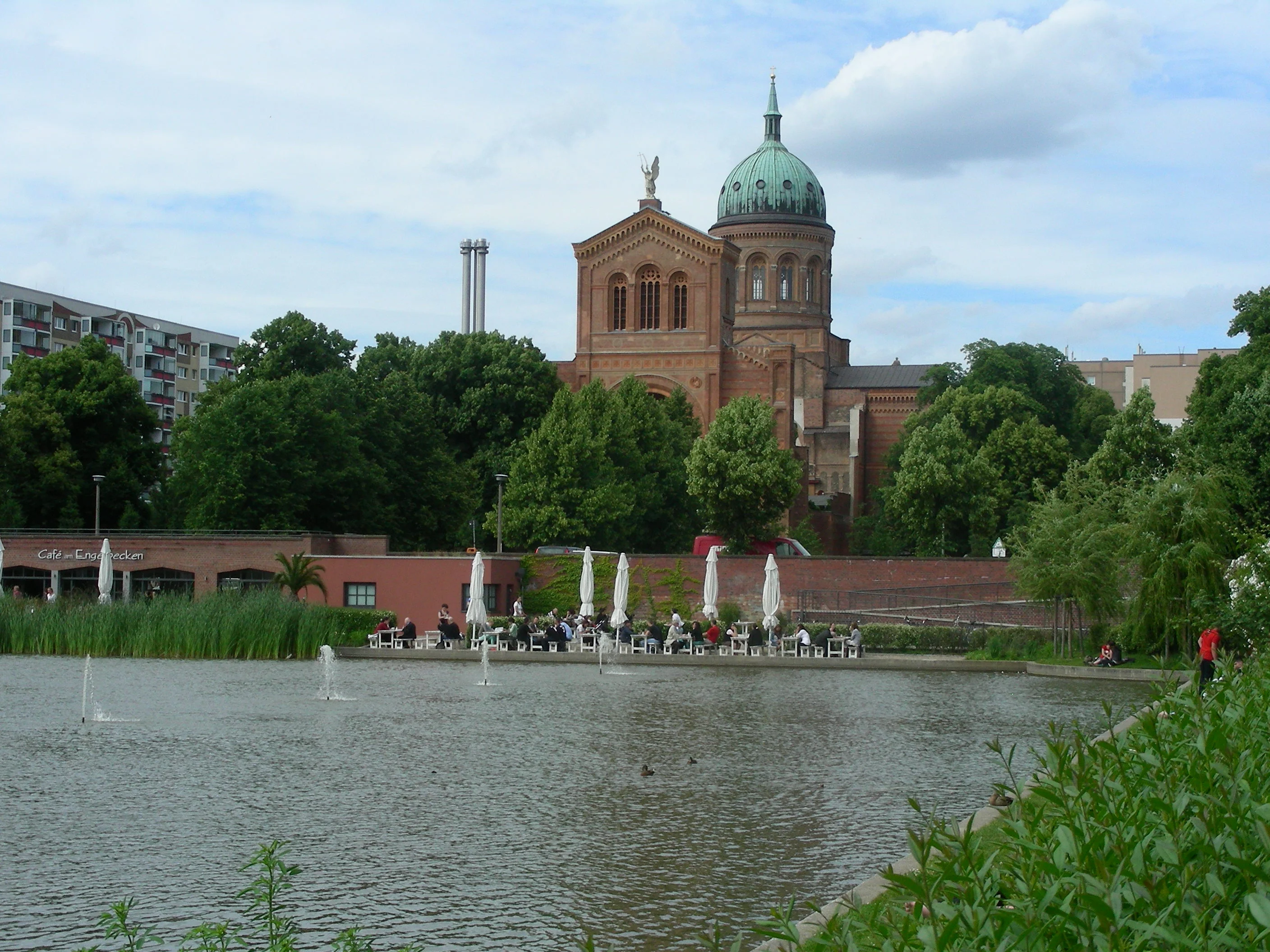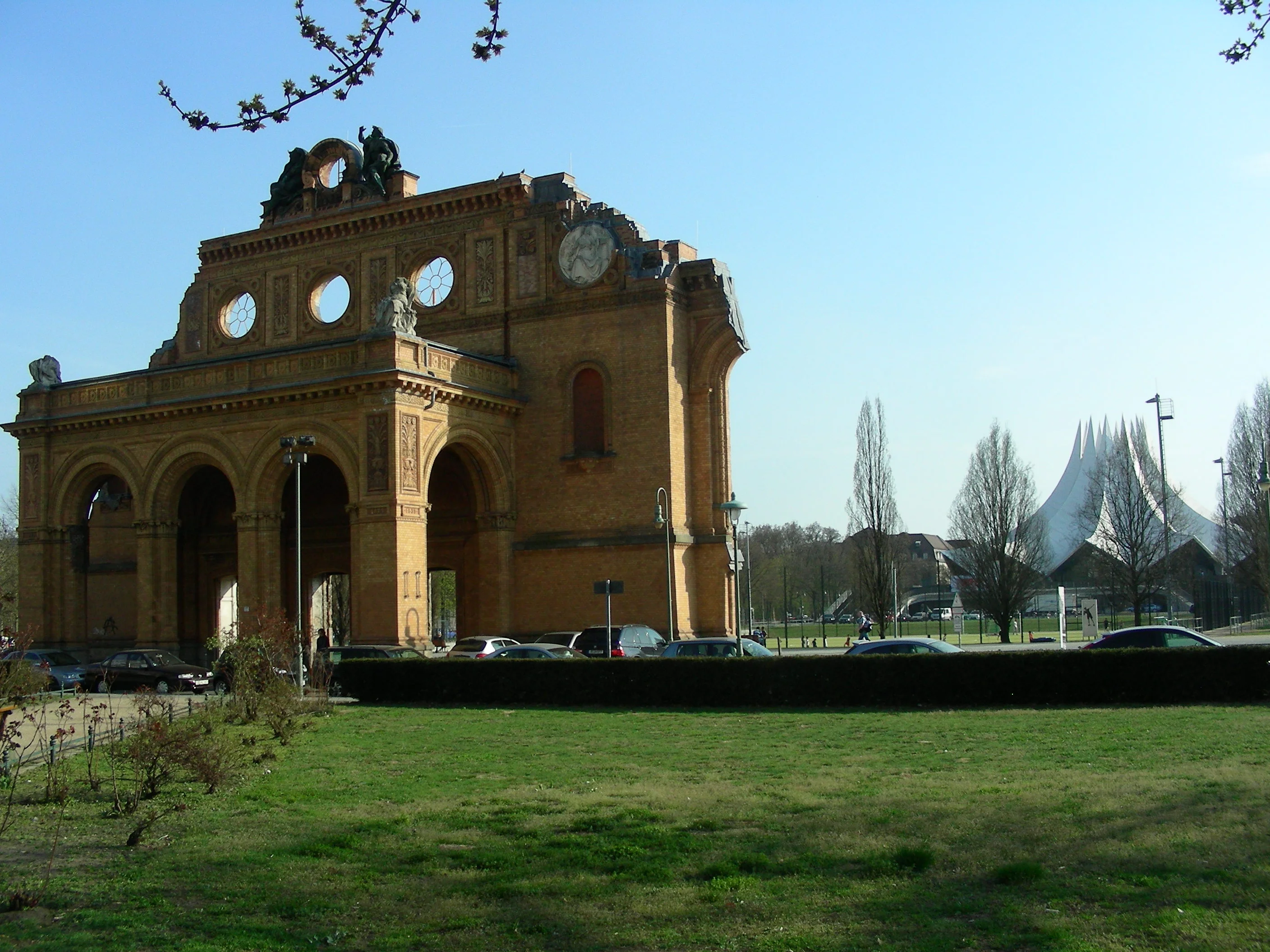Why is Berlin the center of fashion design in Germany and not, for example, Hamburg, Munich, or Frankfurt? Those cities have a stronger economic base, plenty of cultural industries, and weren't split in half for the better part of 60 years. Why Berlin? Why now?
Dong Xuan Center
The Dong Xuan Center is located in the Lichtenberg neighborhood in Berlin. It is tucked away inside an old warehouse and factory complex, and is housed in several corrugated metal and tin-roof buildings. This being Germany, the roofs are covered in solar panels. According to Stil in Berlin, the rest of the complex is slated to be converted into an Asian Culture House, a Markthalle, and several other things.
Each building consists of a long central hallway, with various vendors - ranging from hair salon supply shops to grocery stores to belt stores - occupying space on either side of the hallway. At both ends of the hallway there are poster boards with help wanted ads, neighborhood events, and plain old advertisements. My brother, recently returned from living in Southeast Asia, said it was just the type of place a traveler might find while strolling through Hanoi or Ho Chi Minh City.
Berlin's Ice Factory and Berlin's Future
The Eis Fabrik Berlin, or 'Berlin Ice Factory' on Koepenickerstraße is an abandoned (you guessed it) ice factory along the River Spree. According to Wikipedia (warning: German version), it's one of the oldest surviving ice factories in Germany, and churned out blocks of ice up to 1.5 meters long from its construction in 1914 until its parent company ceased to exist in the early 1990s. There have been plans to demolish it since at least 1995, but the building is still standing today and is currently controlled by TLG, a real estate management company in the city.
Rising Rents and Violence
The issue of gentrification isn't unique to Berlin. But what has been new for me is to witness the visceral, and sometimes violent, reaction of those who feel that their rights are being squeezed. In certain neighborhoods signs like "Go Home Hipsters!" or "Fuck You Yuppies" are common. I've walked past a few of these signs before, but the issue really popped for me a couple of weeks ago when a "Low Rent" sign was posted next to my apartment building, and when later that same day I walked past a new apartment building in Kreuzberg that had been vandalized. It was clearly not a random act of vandalism. Each window was smashed on the ground floor, paint was sprayed onto the upper floors, and "Hood Defense" was spray painted next to one of the windows. I've posted a few pictures throughout this post.
St. Michael's Church
Anhalter Bahnhof
The facade of Anhalter Bahnhof (Anhalter Train Station), located at the intersection of Stresemann Straße and Schöneberger Straße in the Mitte section of Berlin, is the most visible remnant of what was once a bustling and enormous commuter and freight hub. You can see what remains of the facade in the below photograph.
The Reichstag
The Reichstag building lies in the heart of Berlin's political district, just a stone's throw from the Brandenburg Gate and directly on the River Spree. Since its completion in the 1890s as the seat for the newly formed country of Germany's parliament, it has been associated with the different iterations of political rule in the country as a whole.
The Reichstag building is a wonderful example of Berlin layers. Not only has the Reichstag building's official role changed dramatically over the past 100 years, but the physical architecture has, too. Each new form incorporates some of the past while symbolizing the attitudes of the present. These new forms were created intentionally, through design and sabotage, and unintentionally, through war and division.
The Creative Industry in Berlin
Over the past decade, Berlin has gained a reputation as a city filled with artists, musicians, and other types of creative people. After six months (has it been that long already??) living here, I can tell you that the stories are true. In certain neighborhoods there is a pervasive sense of perpetual creativity. There are lots of small galleries, lots of pop-up parties; lots of strange, funky looking buildings, parks and people.
This isn’t just anecdotal evidence sold to enthusiastic tourists and newcomers like me. I’ve been doing research about the impact of creativity on Berlin, and it seems to me that creativity is a defining feature of the city. What’s more, it promises to play an even more important role in shaping Berlin’s future.








